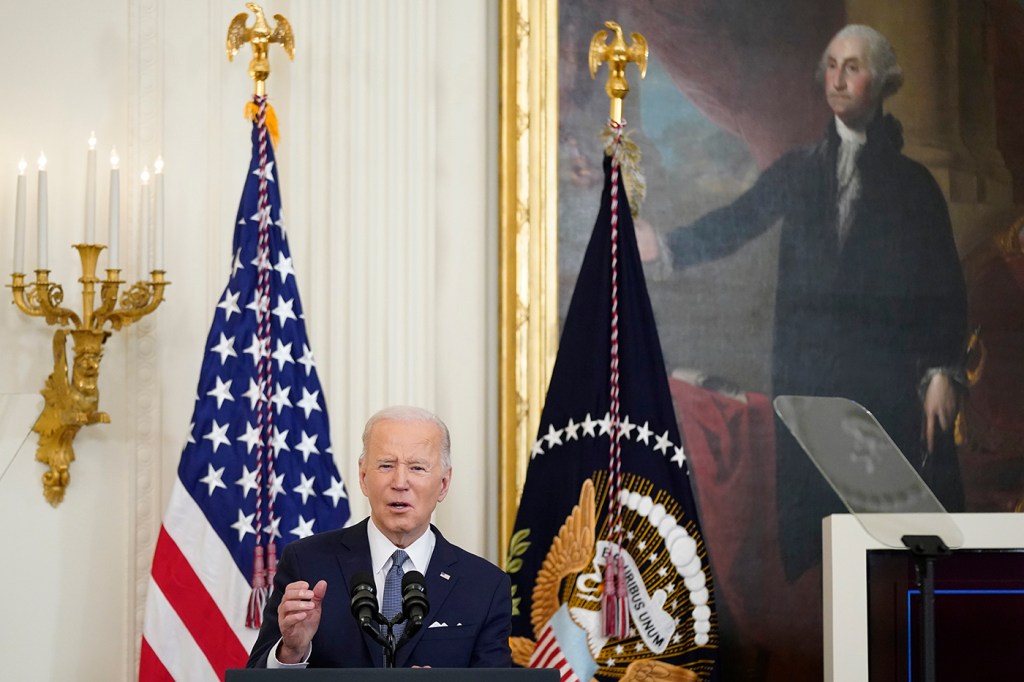Why does the State of the Union address need a ‘designated survivor’?

Editor’s note: Ahead of the State of the Union Address 2024, it’s still unclear who the designated survivor is. The designated survivor in 2023 was Biden’s then-Labor Secretary Marty Walsh. In 2022, when this story was published, it was Gina Raimondo.
Every year, the president convenes members of Congress in the U.S. Capitol to update them and the American people on the state of the nation, often touching on issues both of domestic and international importance. In what’s become an annual tradition, members of the president’s inner circle join with the whole of Congress and the Supreme Court justices on the House floor for the highly anticipated State of the Union address.
The entirety of American leadership huddled together in the same room is, for security reasons, a rare occurrence. But one high-ranking member of government is always conspicuously absent during the annual speech. That one official is the “designated survivor,” who would assume control of the government in the case of a catastrophic event involving the mass deaths of American leaders—such as what could happen in a nuclear or terrorist attack.
Commerce Secretary Gina Raimondo was tapped to be the lone survivor in 2022. She wasn’t present in the Capitol but was at an undisclosed location during the event.

Portraits of Northeastern Professor of Law Jeremy Paul; and Stephen Flynn, director of the Global Resilience Institute. Courtesy Photo and Photo by Matthew Modoono/Northeastern University
Luckily, Raimondo—and the rest of the country’s highest leaders—didn’t need to survive any sort of disaster.
Because of the ongoing COVID-19 pandemic, there was no need for a designated survivor during last year’s joint address before Congress, as most of President Joe Biden’s cabinet members watched the speech remotely and separately. The president’s first speech to Congress is referred to as a “joint address,” which is different from the State of the Union address.
But this year, with COVID-19 receding again, Biden’s in-person speech has taken on new urgency amid the Russian invasion of Ukraine—particularly as Russian President Vladimir Putin put his nuclear forces on “special” alert over the weekend.
Biden’s speech addressed a nation on edge, concerned about its potential involvement in a growing international conflict that is now playing out under the shadow of a potential nuclear escalation—although Biden flatly dismissed Putin’s nuclear posturing on Monday.
Still, it’s precisely this uncertainty about a clash between superpowers that gave birth to the “designated survivor,” says Stephen Flynn, founding director of the Global Resilience Institute at Northeastern, who served as a national security and Homeland Security adviser to four presidential administrations on both sides of the aisle.
“It’s true that there’s always been this tradition of having one of the cabinet officers outside of the Washington, D.C. area,” Flynn says, “and the evolution of this came out of the Cold War.”
The presidential line of succession was first established in 1792 and has been amended twice since then. Were the president to become incapacitated or die, the vice president would assume control of government, followed (in order) by the Speaker of the House; the President Pro Tempore of the Senate; the Secretary of State; the Secretary of the Treasury, and on down the list of cabinet positions. The official list names 18 successors to executive power—a process now spelled out in the 25th Amendment of the U.S. Constitution.
The designated survivor could be any member of Biden’s cabinet, Flynn says. The measure was put in place to reduce the possibility of a “decapitation strike,” or a nuclear attack from a hostile nation intended to eliminate the “command and control” apparatuses in the target nation.
Such a strike would eliminate all of the people with access to the launch codes—and the launch codes themselves.
During the Cold War, which marked a half-century of geopolitical tension between the U.S. and the former Soviet Union, the threat of all-out nuclear war was very real, Flynn says.
“While this all sounds like Dr. Strangelove, a big part of it was built around deterrence,” Flynn says. “You had to demonstrate to an adversary, then the Soviet Union, that you could return that strike right back.”
The Constitution gives Congress the responsibility of establishing a presidential line of succession. Several laws amending the process have not specified whether any particular cabinet position is better equipped for the designated survivor role.
“From my understanding, who is picked has varied,” says Jeremy Paul, a professor of law and former dean of Northeastern’s School of Law. “But the statute has never been invoked because we’ve never had to use it.”
Over the last 35 years, presidents have selected the interior secretary as the designated survivor seven times; the agriculture secretary six times; and the veterans affairs secretary four times.
For media inquiries, please contact media@northeastern.edu.





